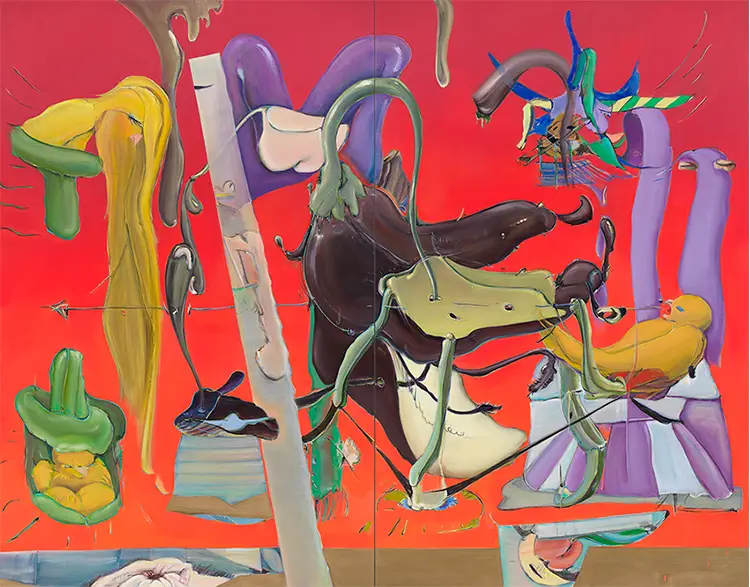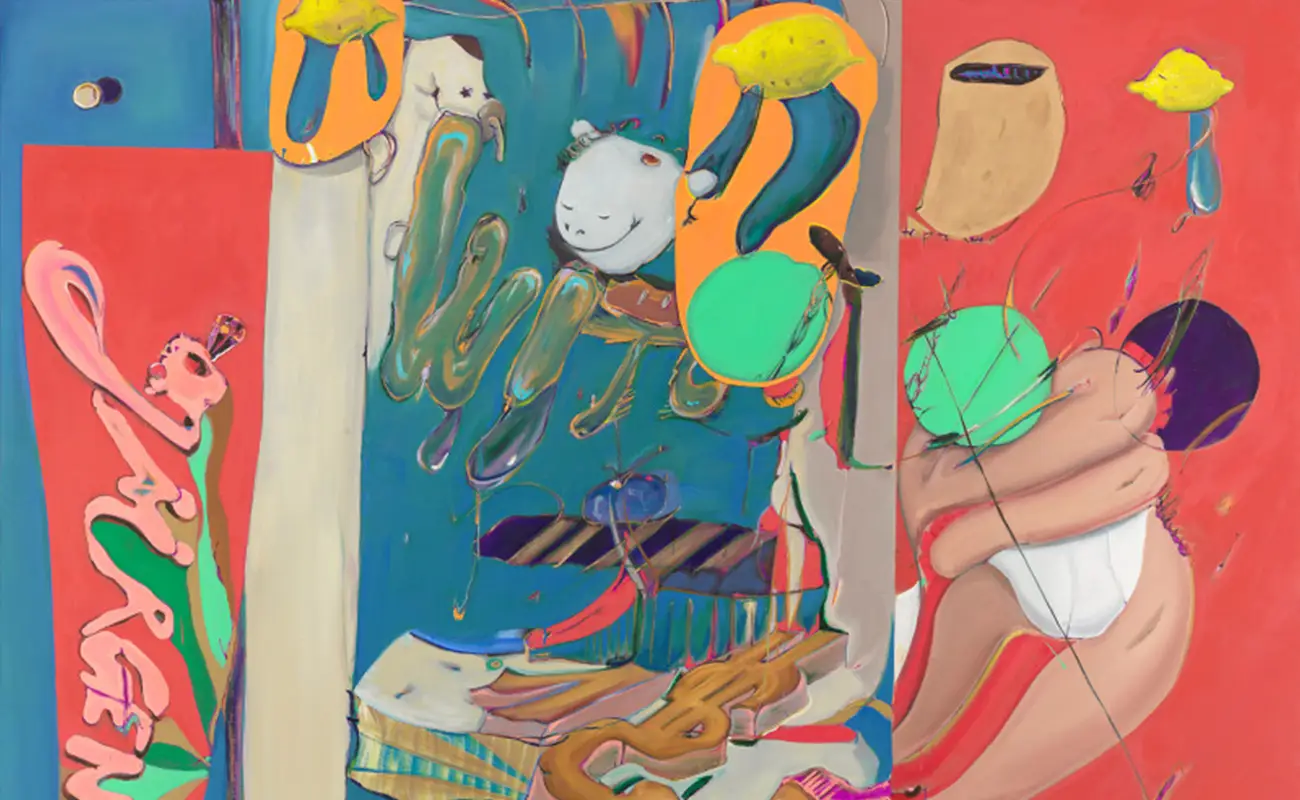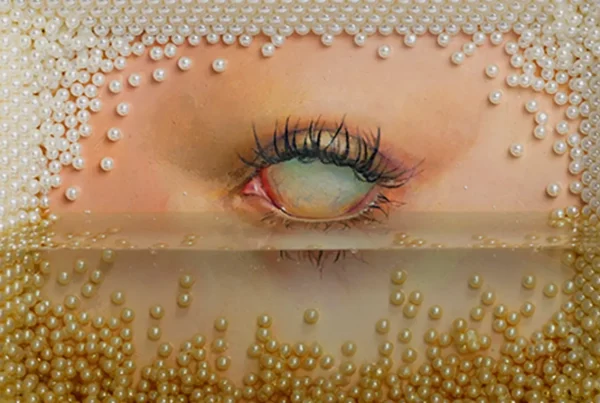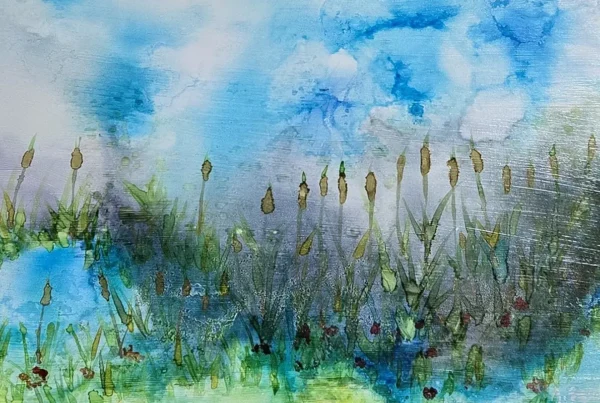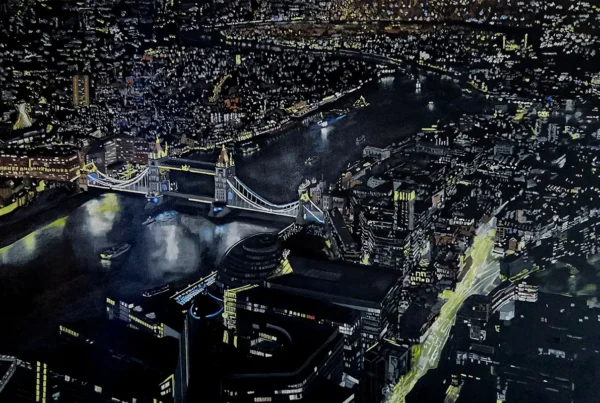Beyond Recognition: The Ambiguous Power of Stefanie Heinze’s Art
Stefanie Heinze’s paintings inhabit a space of wild unpredictability, their fluid forms teasing viewers with fleeting hints of recognizability before receding back into abstraction. Her canvases are at once alluring and disorienting, filled with disembodied limbs, gooey substances, and uncanny figures that defy categorization. Heinze’s visual language taps into something primal and playful, inviting viewers to make sense of the nonsensical—or to relish the refusal of sense altogether. Each piece becomes a stage for projection, where a single work could mean entirely different things to a psychoanalyst, a child, or a dreamer. This democratic ambiguity isn’t merely aesthetic; it is central to her practice, challenging conventional hierarchies of meaning and deflating the pretensions often associated with fine art.
Heinze’s approach is deeply rooted in experimentation with materials and format. She often begins with quick sketches using ballpoint pen, ink, or pencil—sometimes on torn paper or collaged pages—before expanding them into large-scale oil paintings. This shift from small-scale drawings to monumental canvases allows for accidents and errors to remain embedded in the final work, affirming the value of imperfection. Her paintings don’t pretend to be polished or resolute; instead, they embrace chaos, dissolve coherence, and offer an ever-evolving narrative that breaks away from traditional storytelling. Within these compositions, the boundaries between object and subject, figure and background, consistently collapse, producing images that feel alive in their instability. This dynamic visual play has positioned Heinze as one of the most exciting contemporary painters working today.
Her recognition has grown rapidly. Since completing her studies at the Academy of Fine Arts in Leipzig in 2016 (after earlier time at the Academy of Fine Arts in Oslo), Heinze has exhibited in major institutions and galleries across Europe and the U.S. Her solo shows at Capitain Petzel in Berlin and Petzel in New York have received considerable attention, as has her work in high-profile group exhibitions at places like the Institute of Contemporary Art, Miami, The Hepworth Wakefield, and Le Consortium in Dijon. With her paintings entering prestigious collections such as the Hammer Museum, Musée d‘Art Moderne de Paris, and MAMCO Geneva, it’s evident that her strange, humorous, and ambiguous world is not only resonating with critics but is increasingly prized by collectors as well.
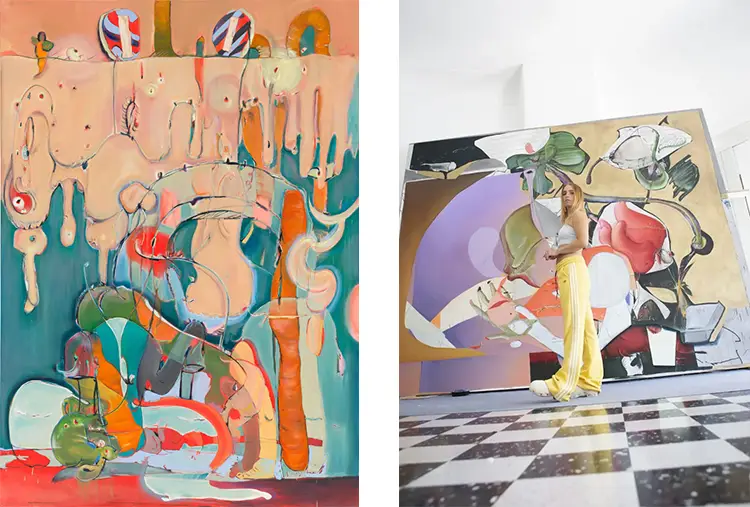
Stefanie Heinze: Unfinished Images, Unfixed Meanings
For Heinze, the creative process is one of uncertainty rather than control. She doesn’t set out to execute a clear vision or replicate any artistic tradition. Instead, she engages in a dialogue with her materials, allowing the paintings to reveal themselves gradually. This intuitive method often begins with impulsive drawings made in sketchbooks—frequently while multitasking or even distracted—which then evolve into the rich, chaotic scenes found on canvas. These transitions, from quick sketches to labor-intensive paintings, allow space for spontaneity, mistakes, and moments of surprise. Heinze values the process of not knowing, of being vulnerable to the unknown direction a work might take, and she transforms this openness into a visual strength. The resulting paintings speak to the emotional complexity of making: joyful and serious, humorous and dark, playful yet exacting.
Her compositions reflect an engagement with failure—not as a shortcoming, but as a vital creative force. Heinze intentionally incorporates blunders, disruptions, and mutations into her process, which often results in forms that are on the verge of collapse or transformation. Figures leak, melt, or burst apart; structures within the painting seem to deteriorate or bend under pressure. This approach, which she refers to as “newsense,” operates as a kind of personal rebellion against the tyranny of logic and resolution. “Newsense” becomes a method for rejecting conventional narratives and opening new possibilities of meaning-making, often guided more by intuition and bodily sensation than intellectual certainty. The absurd is not just present—it’s foundational to her practice.
Despite clear links drawn by critics and viewers to art-historical figures such as Salvador Dalí, Philip Guston, or Neo Rauch, Heinze resists these connections. She acknowledges her appreciation of painting as a medium but distances herself from the need to work within a lineage. Her practice isn’t about homage or reference but about creating from a space that lies outside learned responses and academic training. This resistance to canon is intentional and speaks to her broader interest in disrupting the ways people are conditioned to view art. Heinze’s paintings ask not what a work should be but what it could become—especially when the rules are bent, the images slip, and the meanings break open.
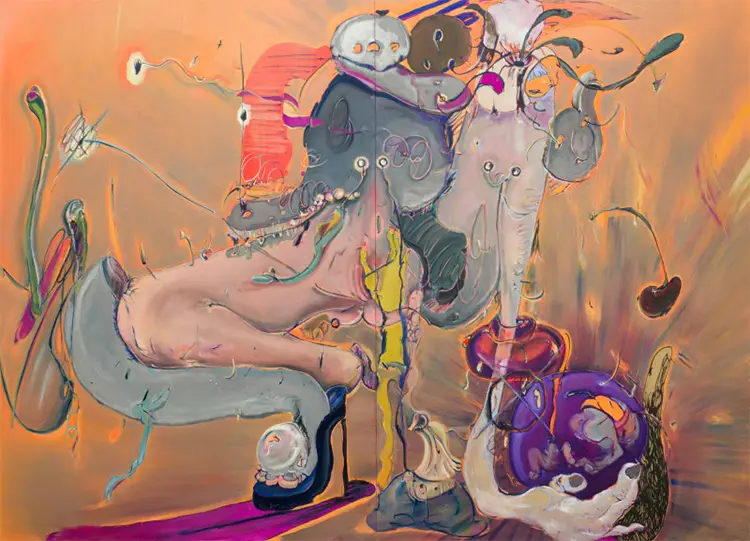
Melting Figures, Shifting Grounds
At the heart of Heinze’s visual language is a persistent negotiation between figuration and abstraction. Her works often include forms that gesture toward bodies, animals, or objects, only to be swiftly undermined by their own instability. They don’t hold still long enough to be named. A foot might dissolve into an ooze of yellow; an eye might double as a hole in a piece of fruit; internal organs morph into candy-colored blobs. These elements float or crash into one another against richly imagined, often surreal backgrounds. Heinze’s use of color further amplifies this visual tension—bright, punchy hues work against grotesque or awkward subject matter, creating a tone that’s both seductive and off-kilter. This complexity keeps the viewer engaged and uncertain, continuously questioning what is being seen and how it should be interpreted.
Her 2020 painting Der Professor, for example, exemplifies her capacity to merge absurdity and discomfort with visual beauty. Though the title suggests an intellectual archetype, the painting itself contains no clear academic figure. Instead, it presents a chaotic entanglement of forms that could suggest anatomy, clothing, or cartoon limbs. Like much of Heinze’s work, it resists the stability implied by its title. Similarly, in A Hollow Place in a Solid Body (2020), the title draws attention to a paradox that plays out across the surface of the canvas. The painting doesn’t depict a literal hollow, nor a solid body—but invites viewers to search for such forms, only to discover that nothing resolves easily. These works ask viewers to suspend expectations and accept ambiguity as part of their aesthetic encounter.
The psychological charge of Heinze’s work extends beyond visual composition into the emotional realm. She views painting not as a form of commentary, but as an interaction with vulnerability—her own and that of her viewers. Fear, blankness, and the unknown become active forces in her studio process. This is perhaps why her paintings feel so immediate and emotionally charged, even when their content remains elusive. They vibrate with a sense of exposure, of confrontation with the unconscious. The paintings are not just meant to be looked at—they are meant to be interpreted, misread, and felt. Their ambiguity isn’t a flaw but an invitation: to encounter complexity without a map, and to embrace meaning that never fully settles.
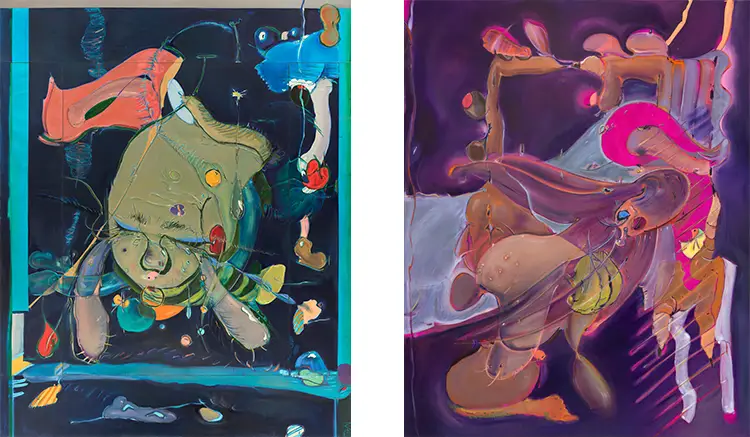
Stefanie Heinze: From Studio Sketches to Auction Blocks
Heinze’s work, once primarily confined to niche art spaces, has seen a dramatic rise in attention from the market, particularly in recent years. Collectors have become increasingly drawn to the distinctive voice that her paintings offer—visually intense, conceptually slippery, and rich with contradiction. Her paintings have now appeared at auction multiple times, each time surpassing expectations. In a 2023 sale at Christie’s, Third Date (2020) fetched $239,000—triple its high estimate—while another work, Vim (2019), sold at Sotheby’s for $203,000 against a projected high of $150,000. These sales not only signal the growing demand for Heinze’s work but also suggest that collectors are seeking out art that challenges aesthetic norms and rewards long-term contemplation.
This commercial success does not appear to have altered Heinze’s practice or priorities. She continues to operate with a strong sense of independence, deeply invested in her working methods and uninterested in conforming to art world trends. Her relocation from Berlin to Brooklyn reflects a personal shift, rather than a strategic one, as she now works out of a more intimate domestic setting. Video interviews show her surrounded by breakfast dishes and tarot cards, which speak to the everyday and esoteric interests that inform her life as much as her work. Tarot, in particular, has become a subject of fascination for her—a tool not for divination, but for self-reflection. The symbolism and openness of the cards echo her own approach to painting: constructed with intention but always ready to yield to interpretation.
Looking ahead, Heinze’s schedule continues to fill with major opportunities. She has a forthcoming solo exhibition at Fondazione Sandretto Re Rebaudengo in 2024, a significant platform that will be accompanied by an expansive exhibition catalogue. The show promises to further solidify her reputation not only as a painter of striking visual imagination but also as a thinker whose work speaks across boundaries—cultural, intellectual, and aesthetic. With pieces now housed in leading institutions like the Pérez Art Museum Miami and the Staatliche Kunstsammlungen Dresden, her career is poised at a critical juncture: rooted in experimental process, yet carried forward by international acclaim. Heinze, however, remains focused on the unpredictable, preferring to trust the paint rather than any plan.
